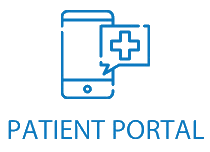Handling Minor Emergencies at Home

Key Points:
- Minor injuries include cuts, bruises, and minor burns, which may not have long-term effects or pose life-threatening risks.
- The ABCs of First Aid: Airway, Breathing, Circulation, are crucial steps when dealing with an unconscious or unresponsive person.
- Urgent care centers are suitable for minor injuries, while serious or life-threatening injuries require immediate attention at an emergency room.
Accidents happen; when they do, it’s essential to know how to handle minor injuries at home. Whether it’s a small cut, a bruise, or a minor burn, having the knowledge to provide immediate care can make a significant difference in the healing process. Creating a safe and secure environment within your home and equipping yourself with basic first aid knowledge can significantly affect the outcome of minor incidents.
According to the Centers for Disease Control and Prevention (CDC), 44% of Americans don’t have first aid kits, and 48% don’t have emergency supplies. First aid kits aren’t a replacement for professional medical advice, but they can help manage urgent situations until you get proper treatment or prevent minor issues from getting worse.
What is a minor injury?
The main difference between minor and major injuries is how much they affect your life. Major injuries can lead to short-term or permanent disability, a lower quality of life, or even death. Injuries that lead to amputation, severe bleeding, loss of consciousness, disfigurement, paralysis, compound fractures, severe burn cases, and eye or head wounds are common types of major injuries.
Minor injuries might be painful, but they don’t have any long-term effect, cause disability, or put your life at risk.
Related: What are non-life-threatening emergencies
Creating a First Aid Kit
The American Red Cross recommends the following first aid kit for a family include:
- Two absorbent compress dressings (5 x 9 inches)
- 25 adhesive bandages (different sizes)
- One adhesive cloth tape (10 yards x 1 inch)
- Five antibiotic ointment packets (approximately 1 gram)
- Five antiseptic wipe packets
- Two packets of aspirin (81 mg each)
- One emergency blanket
- One breathing barrier (with a one-way valve)
- One instant cold compress
- Two pairs of nonlatex gloves (size: large)
- Two hydrocortisone cream packets (approximately 1g each)
- One 3in. gauze roll (roller) bandage
- One roller bandage (4 inches wide)
- Five 3in. x 3 in. sterile gauze pads
- Five sterile gauze pads (4 x 4 inches)
- Oral thermometer (non-mercury/non-glass)
- Two triangular bandages
- Tweezers
- Emergency First Aid instructions
ABCs of First Aid
If a person is unconscious or unresponsive, remember the ABCs of first aid:
- Airway: Open the person’s airway if they’re not breathing.
- Breathing: Provide rescue breathing if the person is not breathing after clearing the airway.
- Circulation: Perform chest compressions to keep blood circulating if the person’s heart has stopped.
First Aid for Bleeding
While it is important to stop bleeding, start with the ABCs of first aid. The following steps are:
- Put on disposable gloves if you have any. This will protect you from infectious illnesses such as viral hepatitis and HIV/AIDS, which may be passed through a person’s blood.
- Rinse the wound with water.
- Cover the wound with gauze or fabric (such as a towel, blanket, or clothes).
- Apply direct pressure on the bleeding area to stop blood flow.
- Elevate the bleeding area above the patient’s heart if you can.
- If the cloth becomes soaked, do not remove it. Removing the first layer will interfere with the clotting process and result in additional blood loss. Instead, add more layers if needed.
- Once bleeding has stopped, apply a clean dressing to the affected area.
First Aid for Burns
To treat a burn, the first step is to prevent it from burning. This may involve cleaning chemicals, disconnecting power, cooling heat with running water, or covering up or removing a person from the sun.
For non-emergency burns, you can use the following first aid steps:
- Flush the burned area with cold running water for a few minutes. Do not use ice.
- Apply a thin gauze bandage to the burned area. If the burn is less severe, apply an ointment such as aloe vera to the burn area before applying the bandage.
- Take acetaminophen or ibuprofen for pain relief.
- Avoid breaking any blisters that may form.
- Stop the injured person from moving, as movement can worsen the injury.
First Aid for Sprains
The first step in first aid is to stop the injured person from moving, as movement can worsen the injury.
In the event that emergency care is not necessary, the following first aid steps should be followed:
- Keep the injured limb as still as possible.
- Apply a cold compress
- Elevate the injured part
- Use nonsteroidal anti-inflammatory drugs (NSAIDs) for pain
- Ask your provider if there is any other treatment you may need for a sprain
First Aid for Nosebleeds
If your nose is bleeding:
- Lean slightly forward, not back.
- Pinch your nose just below the bridge. It should be high enough that the nostrils are not pinched closed.
- After five minutes, see if the bleeding has stopped. If not, keep pinching and check again after 10 minutes.
- While pinching the nose, place a cold pack on the bridge of the nose.
First Aid for Bee Stings
Watch for any signs of an allergy while you’re performing first aid. Call 911 if you or someone stung by a bee begins having a serious reaction that suggests anaphylaxis, even if it’s just one or two signs or symptoms. If you were prescribed an emergency epinephrine auto injector (EpiPen, Auvi-Q, others), use it right away as your doctor directed.
Seek prompt medical care if bees have swarmed you and have multiple stings.
For all others:
- Get the stinger out as soon as possible to stop more venom from entering the body. To remove the stinger, use a sharp object, like a credit card, to scrape it from the skin. Do not squeeze the venom sac using tweezers or your fingers, as this can cause the venom to enter the skin.
- Wash the affected area with soap and water.
- Use a cold pack at the site of the sting to reduce swelling, but don’t put ice directly on the skin.
- Use an allergy medication or an antihistamine to reduce swelling, itching, and pain
Seek Urgent Care or Emergency Care Based on the Severity of an Injury
After applying first aid, assess your injury’s severity to determine the best next step. Minor cuts, scrapes, bruises, sprains, and flu symptoms can be handled by an urgent care center. But for serious, potentially life-threatening injuries, head straight to the nearest emergency room. They’re equipped with the technology and expertise to save lives.
DOC-AID Urgent Care offers the nearest doctor with emergency and urgent care experience without having to visit the Emergency Room. DOC-AID Urgent Care is open seven days a week with extended hours from 10 am to 8 pm. We have several conveniently located locations in Laredo, TX, Weslaco, TX, and Pharr, TX. We accept walk-in patients.


